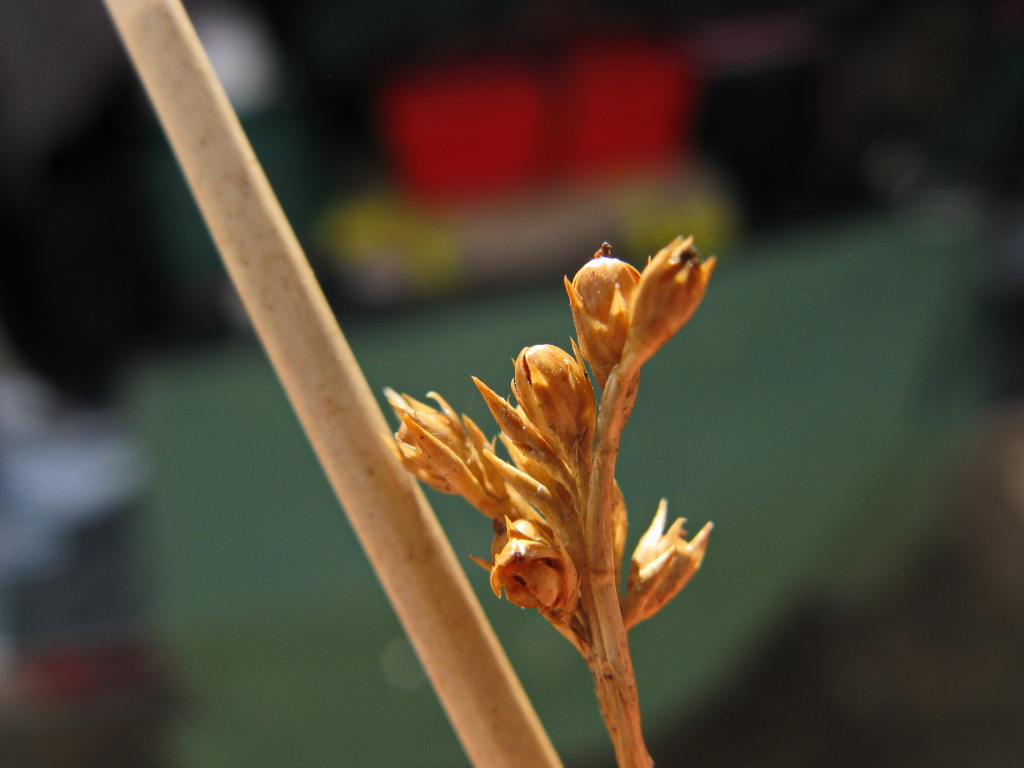Juncus subsecundus
N.A.Wakef. Finger RushTufted perennial with horizontal rhizomes. Cataphylls usually more or less tight, pale brown or pale pinkish-brown towards the base (rarely mid-dark brown), to c 12 cm long. Culms erect, typically slender and wiry, dull green to grey-or bluish-green, 20–90 cm high and 0.5–2.3 mm diam.; striations (18–)20–35(–40), strongly raised and easily counted; pith interrupted throughout or in part (rarely continuous), air spaces variable in size; stomates superficial. Inflorescence variable, flowers either clustered or scattered; primary bract continuous with culm, to c. 22 cm long; prophylls present. Tepals stramineous or rarely faintly reddish tinged, 2.0–4.0 mm long; stamens 3–6, anthers 0.6–1.0 mm long. Capsules stramineous with a golden-brown apex, shorter than, equal to, or longer than the tepals, 2.0–3.5 mm long. Flowers mostly Oct.–Jan., seeds shed mostly Nov.–Feb.
LoM, MuM, Wim, GleP, VVP, VRiv, RobP, MuF, GipP, OtP, WaP, Gold, CVU, GGr, DunT, NIS, EGL, EGU, WPro, HSF, HNF, OtR, Strz, MonT, HFE, VAlp. All States except NT. Introduced in New Zealand. A widespread species in Victoria, tending to occur in slightly drier sites than most species of subgenus Genuini.
Specimens of Juncus subsecundus are variable in inflorescence shape; at one extreme those with few tight flower clusters resembling J. filicaulis and at the other extreme those with very open inflorescences with widely spaced flowers resembling J. remotiflorus and J. radula. Juncus subsecundus often resembles J. flavidus but differs in having fewer, more prominent culm striations, superficial stomates and cataphylls that are paler towards the base.
Hybrids with J. sarophorus, J. remotiflorus, J. radula, J. pallidus, J. flavidus, J. filicaulis, J. australis, J. aridicola and J. amabilis are known.
Albrecht, D.E. (1994). Juncus. In: Walsh, N.G.; Entwisle, T.J., Flora of Victoria Vol. 2, Ferns and Allied Plants, Conifers and Monocotyledons, pp. 197–233. Inkata Press, Melbourne.
 Spinning
Spinning



